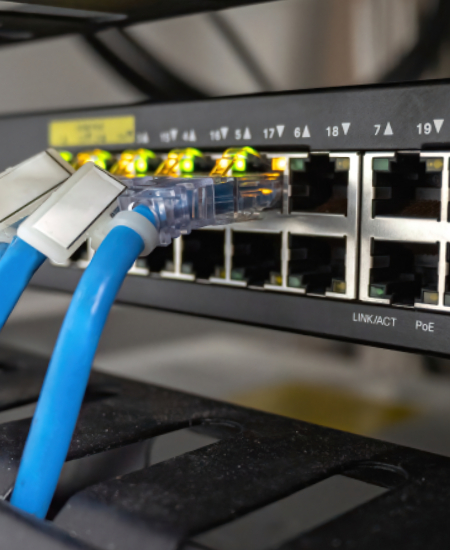
Network Setup and Security
Get support from our security experts for information and customized recommendations.
What is Network Setup?
It is the process of completing the necessary steps to configure the network connections of computer systems and devices and to enable them to communicate with each other.
Selection of Network Hardware
The selection of hardware components for network installation is very important. This includes routers, switches, modems, cabling, network adapters and other network components. The choice should be based on the requirements of the network, the services to be used and the number of users.
Network topology defines the physical layout of devices and network connections. It can include different types of topology such as star, tree, ring, mesh or flat. The choice of topology should be based on the size, requirements and growth potential of the network.


Cabling and Network Protocols
Proper cabling methods and connections must be used in network installation. This includes connecting devices to switches or routers using Ethernet cables, using cables that comply with cabling standards, and making the necessary connections.
Network protocols determine how devices and applications communicate over the network. For example, the TCP/IP (Transmission Control Protocol/Internet Protocol) network protocol enables data communication over the internet. The protocols and services to be used in the network should be determined according to the requirements of the network.
Fundamentals of Network Security
Network security is important to ensure data security, prevent unauthorized access, mitigate data breaches, and maintain business continuity. It also enhances customer trust and safeguards brand reputation.
You should use measures such as firewall, secure authentication, data encryption, regular updates, malware protection, and content filtering. Additionally, it is important to monitor and audit activities using network management and monitoring tools.
Length, complexity, and diversity are important for creating a strong password. Create a password with a minimum of 8 characters and include a combination of uppercase and lowercase letters, numbers, and special characters. Using a unique and hard-to-guess password enhances security.
You should choose a firewall that suits your needs. A top-notch firewall should have advanced traffic monitoring, content filtering, intrusion detection and prevention features. Additionally, it should support updates and be scalable.
To keep your network up to date, regularly update the firmware of network components (router, switch, security devices). Also, ensure that other components such as operating systems, applications, and security software are regularly updated. Updates patch security vulnerabilities and help keep your system secure.